
Under the Whyte notation for the classification of steam locomotives, 0-4-0 represents one of the simplest possible types, that with two axles and four coupled wheels, all of which are driven. The wheels on the earliest four-coupled locomotives were connected by a single gear wheel, but from 1825 the wheels were usually connected with coupling rods to form a single driven set.

The South African Railways Class 8X 2-8-0 of 1901 was a steam locomotive from the pre-Union era in the Cape of Good Hope.
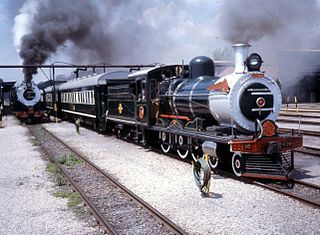
The South African Railways Class 6 4-6-0 of 1893 was a steam locomotive from the pre-Union era in the Cape of Good Hope.

The South African Railways Class 6F 4-6-0 of 1900 was a steam locomotive from the pre-Union era in the Cape of Good Hope.
The South African Railways Class Experimental 6 4-8-0 of 1906 was a steam locomotive from the pre-Union era in the Cape of Good Hope.

The NZASM 19 Tonner 0-4-2T of 1891 was a South African steam locomotive from the pre-Union era in Transvaal.

The Cape Government Railways 2nd Class 4-4-0T of 1882 was a South African steam locomotive from the pre-Union era in the Cape of Good Hope.

The Cape Government Railways 1st Class 4-4-0T of 1875 was a South African steam locomotive from the pre-Union era in the Cape of Good Hope.
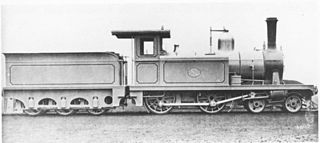
The Cape Government Railways 1st Class 4-4-0TT of 1881 was a South African steam locomotive from the pre-Union era in the Cape of Good Hope.

The Cape Government Railways 3rd Class 4-4-0 of 1898 was a South African steam locomotive from the pre-Union era in the Cape of Good Hope.
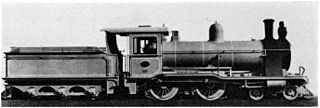
The Cape Government Railways 3rd Class 4-4-0 of 1903 was a South African steam locomotive from the pre-Union era in the Cape of Good Hope.

The Cape Government Railways 1st Class 0-4-0ST of 1875 was a South African steam locomotive from the pre-Union era in the Cape of Good Hope.

The Cape Government Railways 2-6-0ST of 1902 was a South African steam locomotive from the pre-Union era in the Cape of Good Hope.
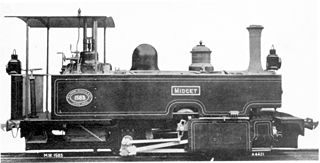
The Cape Government Railways Type C 0-4-0T Midget of 1902 was a South African steam locomotive from the pre-Union era in the Cape of Good Hope.
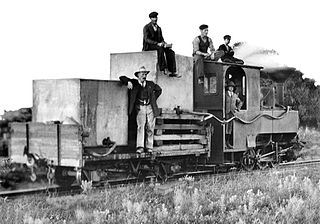
The Cape Government Railways NG 0-6-0T of 1903 was a South African steam locomotive from the pre-Union era in the Cape of Good Hope.

The Cape Government Railways NG 4-6-2T of 1908 was a South African narrow-gauge steam locomotive from the pre-Union era in the Cape of Good Hope.

The CSAR Railmotor of 1907 was a South African steam railmotor locomotive from the pre-Union era in Transvaal Colony.
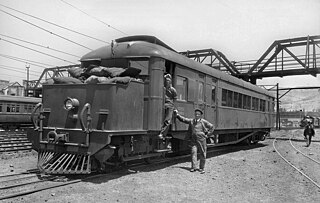
The South African Railways Clayton Railmotor of 1929 was a steam railmotor.
The South African Railways Class 8R 4-8-0 of 1930 was a steam locomotive.

Under the Whyte notation for the classification of steam locomotives, 0-4-0+4 represents the wheel arrangement of no leading wheels, four powered and coupled driving wheels on two axles and four trailing wheels on two axles mounted in a bogie.



















